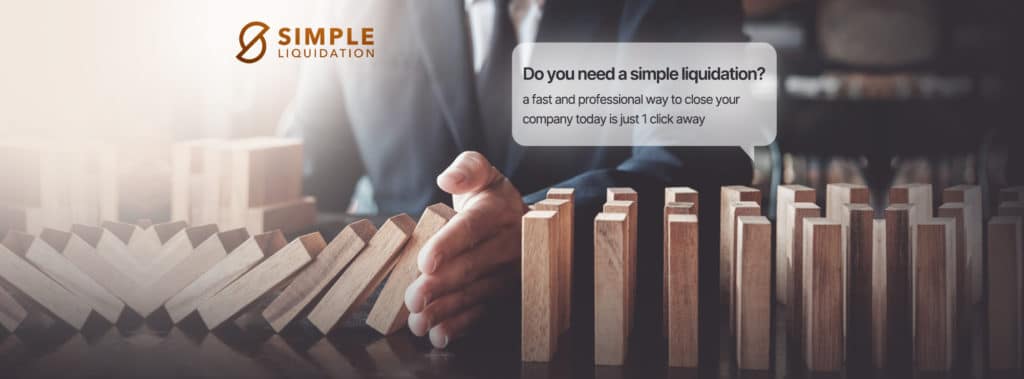Have you decided that it’s time to retire? Is it finally time to hang up your suits, tuck away the computer and focus on having a bit of time to yourself? Retiring can be a great feeling, as you give yourself the freedom to do the things you’re yet to have done and go to the places that you’re yet to have seen. If you work a regular job then retiring is easy as you simply stop working there; however, if you own your own business then taking the right steps towards closing it down can prove to be somewhat tricky. If you currently find yourself in this position then be sure to keep reading as here we will be discussing the best ways to close your limited company when retiring.
Closing Your Company
When it comes to closing your company upon retirement, there are a few different options available. If your company is dormant and you do not have any assets in it, shareholders on board or creditors then it is possible you can just dissolve the company going through the necessary channels in Companies House.
On the other hand, it’s more common for people who are retiring to have companies that are currently trading with creditors and shareholders still on board, as well as assets that need to be distributed. If that’s the case then you cannot just dissolve your company and instead, different steps need to be taken to close down everything effectively.
You should speak to professionals about what your best way forward is but chances are, if you have £25,000 or more in your company, the most effective option will be Members Voluntary Liquidation. If you are going to go down this road then you will need to get a licensed insolvency practitioner on board to help.
What is Members Voluntary Liquidation?
Members voluntary liquidation is a process where the shareholders of a company will appoint a liquidator to formally close down a solvent business. As soon as the company’s assets have all been realised and it can be confirmed that company does not have any further outstanding liabilities, the capital distribution will be collated and then shared amongst the shareholders. In order for a member’s voluntary liquidation to occur, it needs to be initiated by the Directors of the company and then approved by the shareholders with 75% of the vote. As such, if you have shareholders or other directors who run the business with you, you need to make your plans of retirement clear and discuss closing down the company.
What Are the Benefits to a Member’s Voluntary Liquidation?
The benefits depend upon how much money you have within your company but generally speaking, members voluntary liquidation is the best option to close your limited company as the tax implications are less severe. As a result, you could end up saving thousands of pounds.
The reason for this is because any of the funds that end up being distributed following the members voluntary liquidation are subject to capital gains tax as opposed to being subject to income tax. You could also benefit from a 10% marginal rate on distributions if you qualify for Entrepreneurs Relief.
What is the Difference Between a Members Voluntary Liquidation and a Creditors Voluntary Liquidation?
There is a difference between an MVL and a CVL. MVLs only apply to companies which are solvent. In fact, one of the first steps involved when starting an MVL is to ensure that your company is solvent, meaning you need to establish there are sufficient assets to pay off all of the liabilities of the company in full whilst also making a distribution of the remainder to the company’s shareholders.
A CVL is different as this applies to insolvent companies. Essentially, if a business is not in a strong enough financial position to pay off its creditors and all other liabilities then that company is considered insolvent. A CVL is where the directors of a company will choose to voluntarily liquidate their company to try and reduce the amount of debts they owe as much as possible before they cease trading.
What is the Members Voluntary Liquidation Process?
The process surrounding members voluntary liquidation is reasonably straightforward as you need to:
- Hold a board of directors meeting: Depending on the articles of association, winding up resolution can be passed by either a written resolution or following a meeting of the company’s shareholders. Most companies that were formed after the Companies Act 2006 will be able to do this by written resolution.
- Declaration of solvency: This is a statement confirming all of the company’s assets and liabilities. It is signed by the company director(s). Once it has been completed, the form should be filed with Companies H
- Shareholders meeting: The shareholders will then be asked to vote on the MVL, indicating whether they are for or against it.
- Company in liquidation: After the company has been put into liquidation, the liquidator then needs to deal with the formalities of appointment. Various forms will need to be filed at Companies House for this.
- Deed of Indemnity: It’s most likely shareholders are going to be interested in purchasing the distribution after a few days of the company being wound up.
- Final meeting.
Do You Need Help Closing Your Company?
If you are currently in the process of retiring and you would like some help closing your company then it is worth enlisting the help of experts. Generally speaking, the best way to move forward is with a member’s voluntary liquidation but this is also going to vary depending on your company’s current status.
Be sure to speak to an organisation like Simple Liquidation as our team of experts are on hand and are going to be able to provide a proper breakdown detailing everything you need to know and what your best way forward is. If you have any questions or would like any further information on how we can help your business then do not hesitate to get in touch.





